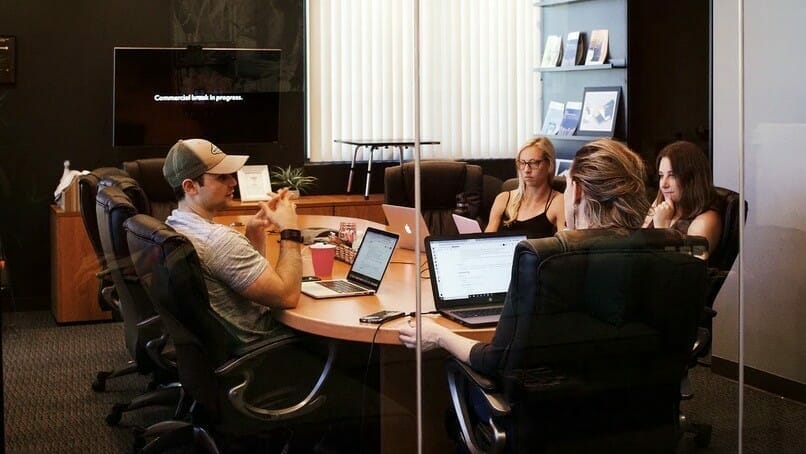The answer to that question depends on your perspective.
Not unexpectedly, it seems many CEOs are firmly convinced of the need to have all workers in their cubicles, all the time. While some have publicly made much of their plans to provide greater flexibility and choice for their employees, others seem less committed.
Consider, for example, the viewpoints of these business leaders:
- Goldman Sachs CEO David Solomon called remote work an aberration that would be corrected as soon as possible.
- Apple is requiring its employees to return to in-office work at least three days per week starting in September, in spite of a public push by employees requesting a more flexible approach.
- JP Morgan Chase CEO Jamie Dimon said that remote work doesn’t work for the young and those who want to hustle, adding, “In my view, September, October, it will look just like it did before and everyone’s going to be happy with it.”
In fact, many workers of various skill levels in various roles across a broad swath of industries are not going to be “happy with it.”

Why remote work matters
Having discovered over the course of the past 18 months that many of us can indeed work very well from home, the push to return to the physical office is being met with some resistance.
And why not? Remote work offers choice, freedom, and comfort (work in your PJs? Dog at your feet? Yes to both!), the end of long and stressful commutes, financial benefits that accrue once you take away the costs of commuting and work-wardrobe expenses, and the ability to more readily balance family and work commitments. Not to mention environmental considerations: fewer greenhouse gases emissions and a lower carbon footprint.
And then there’s the issue of COVID. For some, working in-office alongside the unvaccinated presents concerns, as does the ability of the virus to circumvent the vaccine by mutating. Doctors, epidemiologists, and other experts point out that the greater the number of unvaccinated people, the greater the risk of variants gaining dominance and vaccines becoming ineffective. COVID will be with us well into the future, and it is another consideration when planning for in-office work.
The Apple employee protest that originated on a Slack chat quite likely sums up the thoughts of many as they contemplate a return to the physical office space: “For many of us at Apple, we have succeeded not despite working from home, but in large part because of being able to work outside the office. The last year has felt like we have truly been able to do the best work of our lives for the first time, unconstrained by the challenges that daily commutes to offices and in-person co-located offices themselves inevitably impose; all while still being able to take better care of ourselves and the people around us.”

Addressing the “Great Resignation”
Interestingly, heading into the summer the U.S. reported nearly nine million individuals were looking for work; likewise, unfilled jobs stood at about the same number, a record high. In spite of this interesting equation, employers are unable to find qualified candidates, and salaries are rising.
Caroline Stokes, author, HR leader, and founder of Forward, an executive search and selection firm, noted that what’s happening here goes beyond the “Great Resignation”: “As economies start to open up again, there are predictions of workers quitting their old jobs in search of something new. But there’s a bigger shift happening—and employers are simply not prepared for this new reality. Employees are re-asserting control: Unlike pre-COVID times, we can’t rely on humans to stick with their job if they’re not happy.”
I see these as the four pillars that will take an organization through the next few months, and beyond:
1. Flexibility
Uncertain times demand a flexible organizational mindset. Global HR executives foresee the integration of remote work as a permanent shift for businesses. Hybrid work (in-office coupled with remote work) policies and solutions will become the norm for many businesses. Leaders will need to take great care in considering and implementing solutions that are individualized, yet seen as consistent and fair.
2. Communication
Communication that is open and honest, focused and frequent, and conveyed with empathy and humility, is essential to employee engagement, as well as to business growth and success. This type of communication will engender loyalty and respect from your teams (and your clients). It’s also a two-way street. In the current business climate, it’s more important than ever that your employees know they are listened-to and heard.
3. Culture
Building a strong and healthy corporate culture of trust and respect, one where employees feel engaged, supported, safe and heard, is essential—and, admittedly, takes extra care and attention with a remote or hybrid workforce.
4. The right fit
Now more than ever, it’s imperative for businesses to hire the right people and place them in the right seats. Organizations need to factor in and use the necessary resources, time, and tools to find and retain top talent. Minus this approach, businesses will find themselves in a never-ending cycle of employee turnover and rehiring.
Join 10,000 companies solving the most complex people problems with PI.
Hire the right people, inspire their best work, design dream teams, and sustain engagement for the long haul.
The answer to our original question remains somewhat elusive, though the picture is coming into ever-sharper focus as we march toward September. How does a business move forward into the shifting workplace and labor market model? Carefully.
Tom Johnston is an executive and corporate consultant who specializes in delivering high-impact leadership and organizational coaching, training, and consultancy. His expertise lies in empowering entire organizations and their people to become the best they can be while achieving optimal business results.
Contact information:
tom@tjcoaching.com
https://tjcoaching.com


